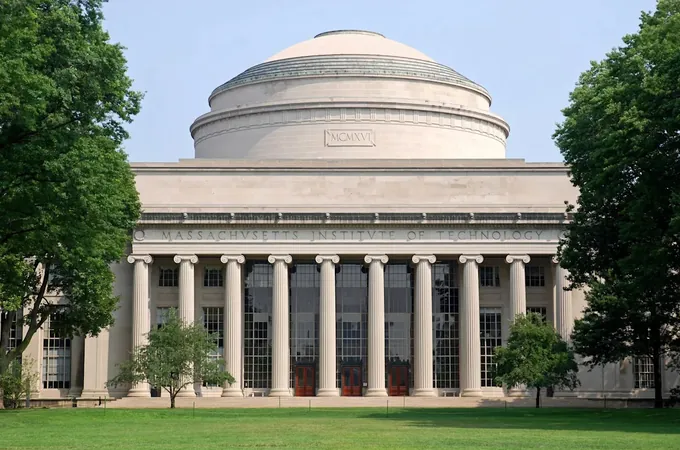
Unlocking the Mystery of Primate Ovarian Development: How Our Lifetime Supply of Eggs is Formed
2025-08-30
Author: Mei
In a groundbreaking discovery, scientists have provided new insights into how primates, including humans, develop their lifetime supply of egg cells, known as the ovarian reserve.
Published on August 26 in the journal *Nature Communications*, this research maps the intricate development of egg cells and their supporting structures in monkey embryos, tracing their growth from the earliest stages in the womb up to six months after birth.
Filling the Gaps in Reproductive Biology
This detailed mapping helps researchers fill in critical gaps in an area of biology that has long been shrouded in mystery, according to Amander Clark, a developmental biologist at UCLA and co-author of the study. Understanding this development can lead to improved lab models for studying reproductive diseases linked to the ovarian reserve, such as polycystic ovary syndrome (PCOS), a hormonal disorder that can lead to infertility.
The Role of Ovaries in Female Health
Ovaries are vital organs for female reproduction, responsible not only for egg production but also for the secretion of essential hormones like estrogen, progesterone, and testosterone. The journey begins early — just six weeks after fertilization, when germ cells start to divide and cluster into formations known as nests.
As these nests break open, individual egg cells are formed and supported by specialized cells called pregranulosa cells. These primordial follicles, which form around 20 weeks into gestation, are critical for the ovaries' later ability to produce eggs and hormones.
Connecting Development to Disease
Many ovarian diseases can be traced back to issues with these primordial follicles. Despite this, understanding their development has been largely overlooked until now. This new mapping reveals a clearer picture of how the ovarian reserve forms during pregnancy, which could help explain fertility issues that arise later in life.
A Surprising Discovery About Folliculogenesis
To delve deeper into the origins of ovarian reserves, Clark's team studied a monkey species that closely resembles human physiology. They sampled ovarian tissue from female embryos and fetuses at various stages, aiming to pinpoint key developmental moments.
Analyzing their findings, researchers noted that pregranulosa cells emerge in two waves, with the second wave between days 41 and 52 being crucial for forming primordial follicles. Surprisingly, they discovered that the ovary undergoes practice runs of folliculogenesis before birth, indicating that some follicles mature and produce hormones even before we are born!
Looking Ahead: The Future of Ovarian Research
This exploration is just the beginning. Researchers have identified two genes active prior to the second wave of pregranulosa cell formation, leading to further inquiries about their role in ovarian development. However, experts advise caution, noting that the developmental window is incredibly dynamic, requiring more detailed data collection to paint a clearer picture.
As research continues, these findings pave the way for deeper understanding and potentially transformative approaches to addressing fertility issues and ovarian health.


 Brasil (PT)
Brasil (PT)
 Canada (EN)
Canada (EN)
 Chile (ES)
Chile (ES)
 Česko (CS)
Česko (CS)
 대한민국 (KO)
대한민국 (KO)
 España (ES)
España (ES)
 France (FR)
France (FR)
 Hong Kong (EN)
Hong Kong (EN)
 Italia (IT)
Italia (IT)
 日本 (JA)
日本 (JA)
 Magyarország (HU)
Magyarország (HU)
 Norge (NO)
Norge (NO)
 Polska (PL)
Polska (PL)
 Schweiz (DE)
Schweiz (DE)
 Singapore (EN)
Singapore (EN)
 Sverige (SV)
Sverige (SV)
 Suomi (FI)
Suomi (FI)
 Türkiye (TR)
Türkiye (TR)
 الإمارات العربية المتحدة (AR)
الإمارات العربية المتحدة (AR)